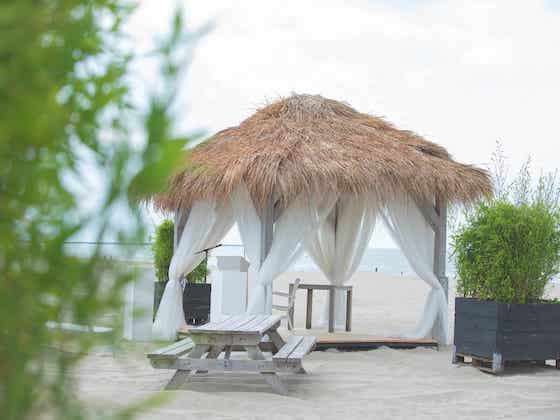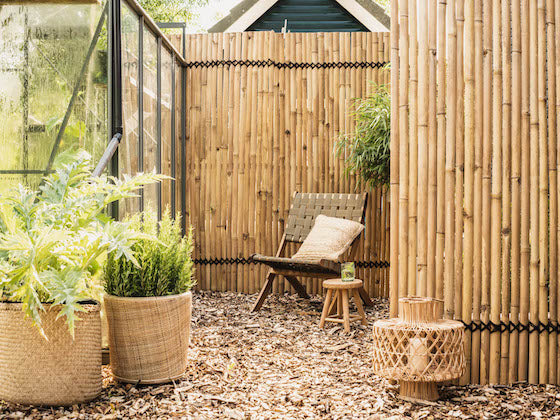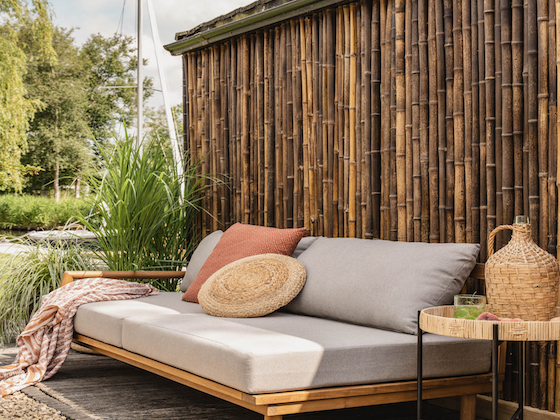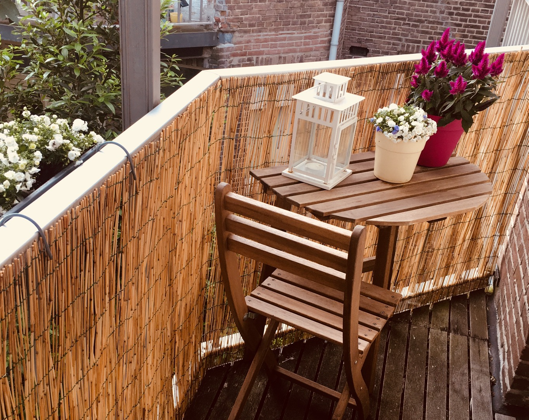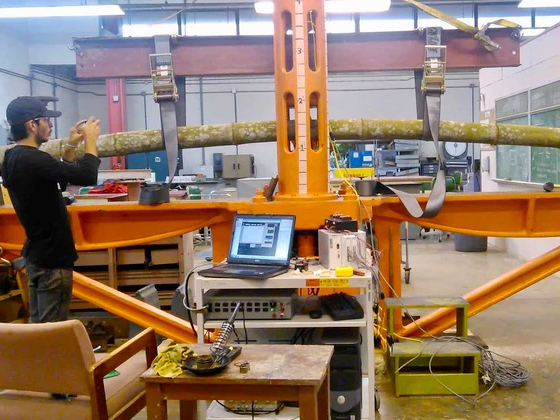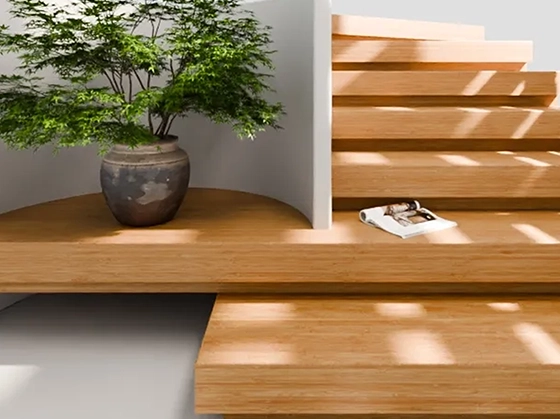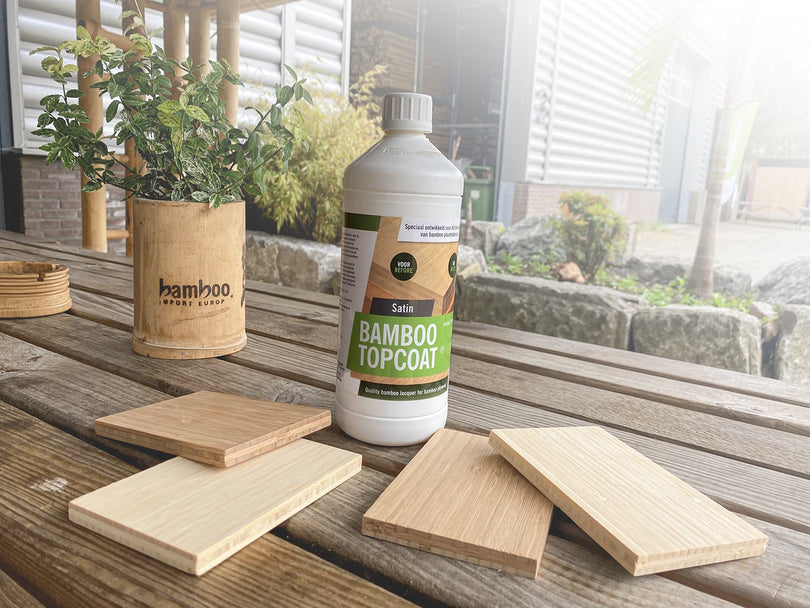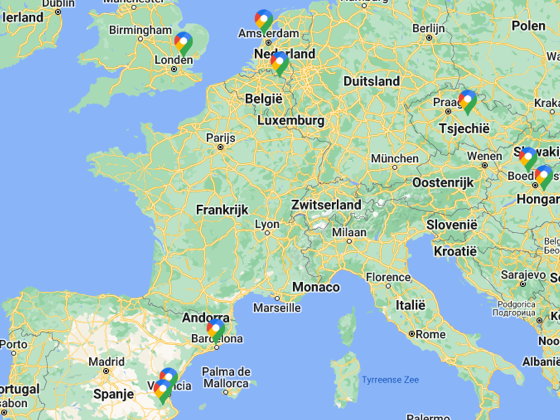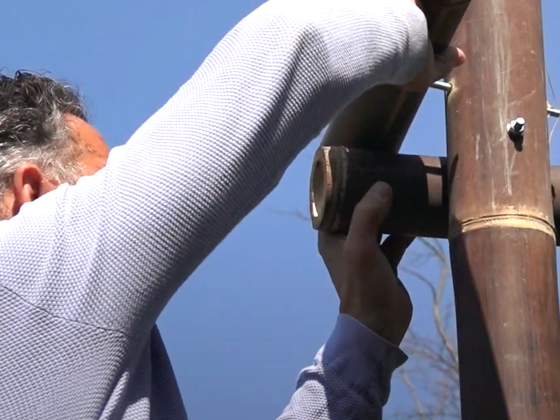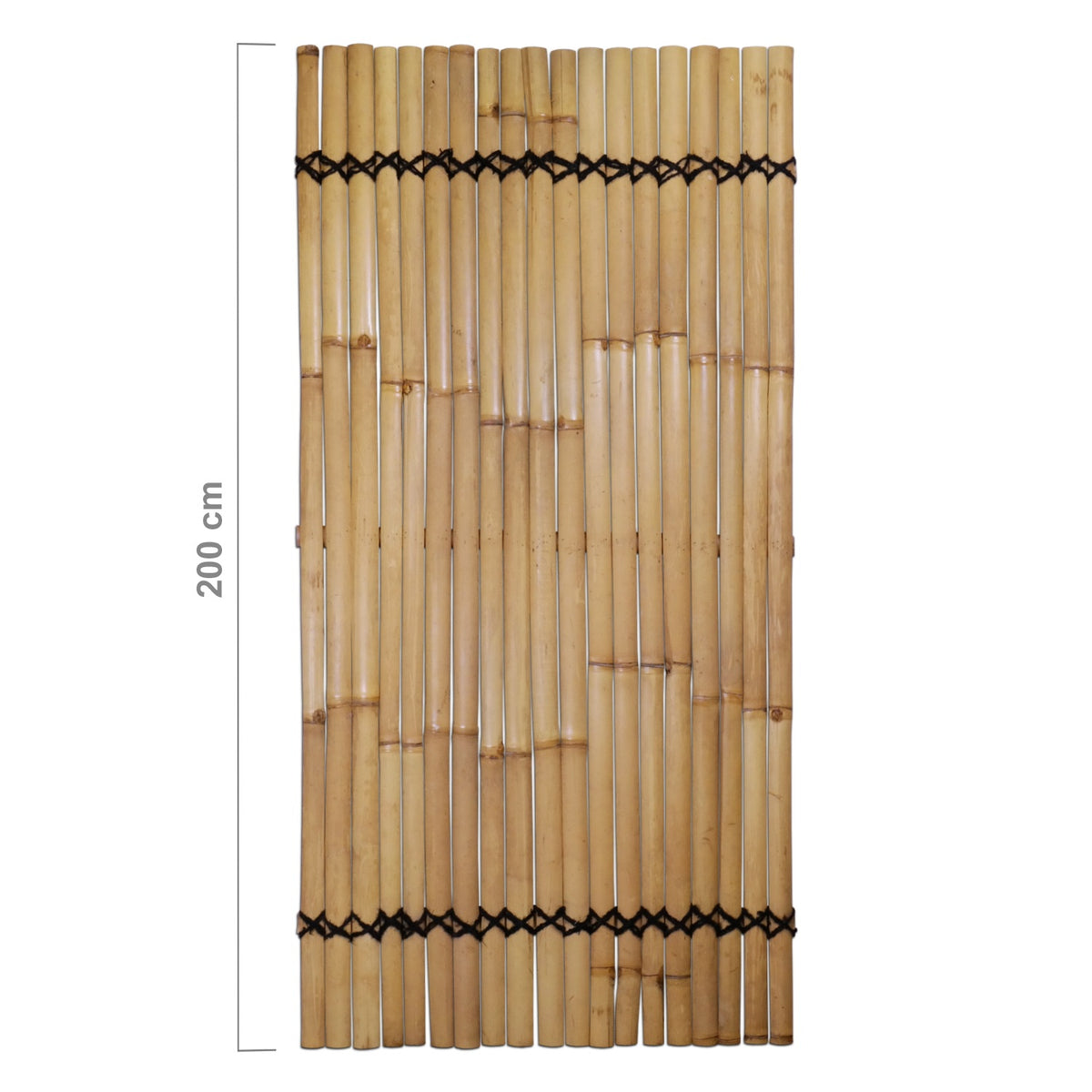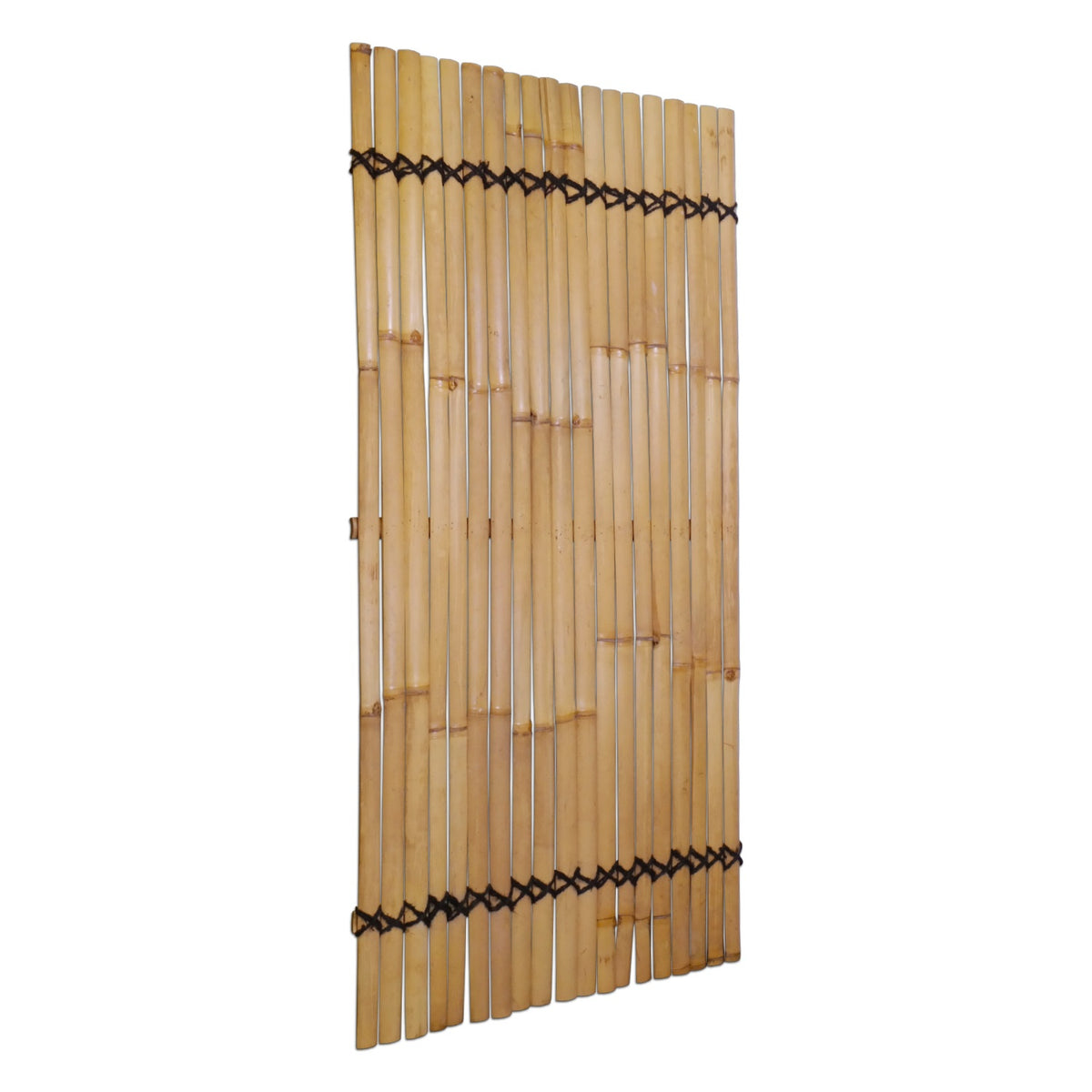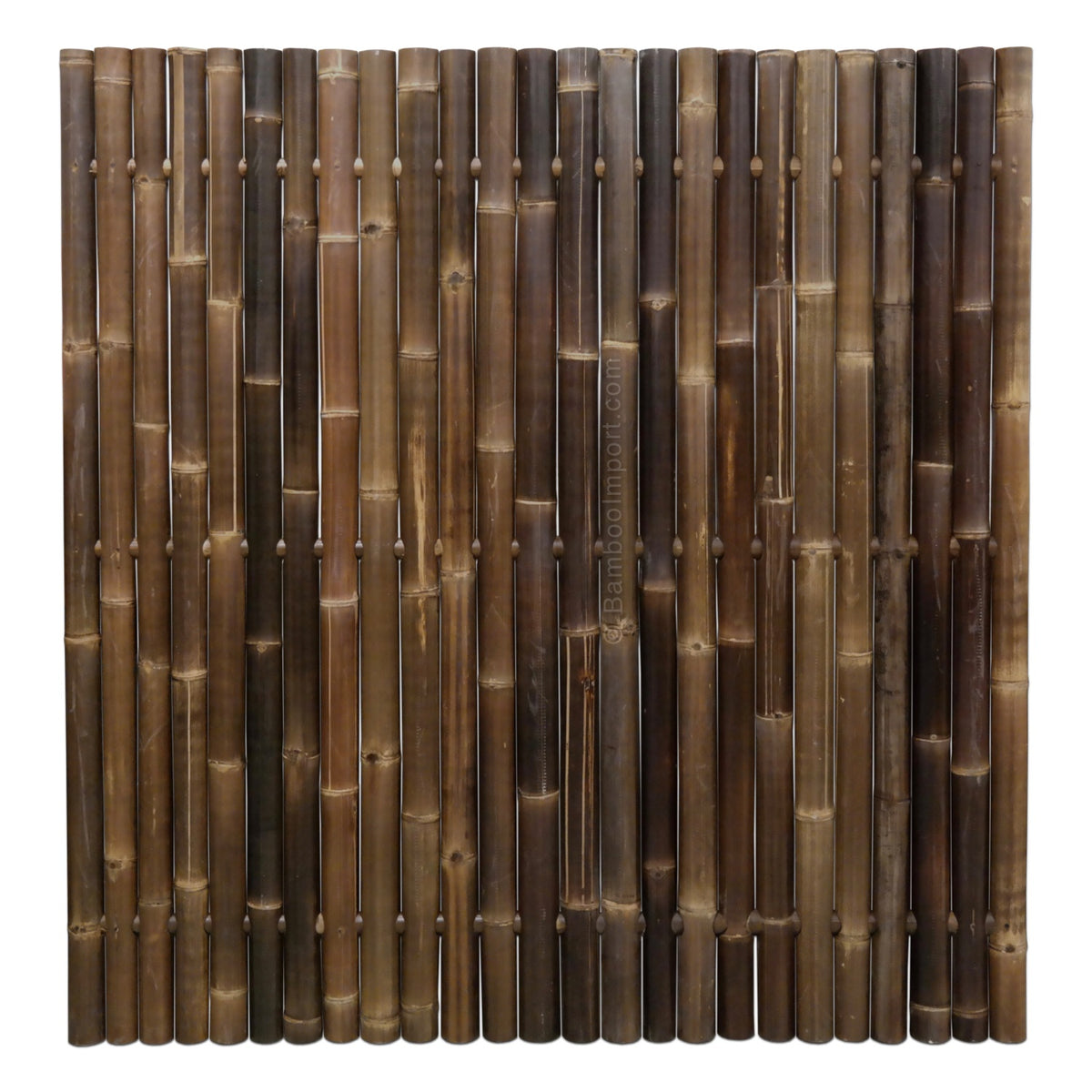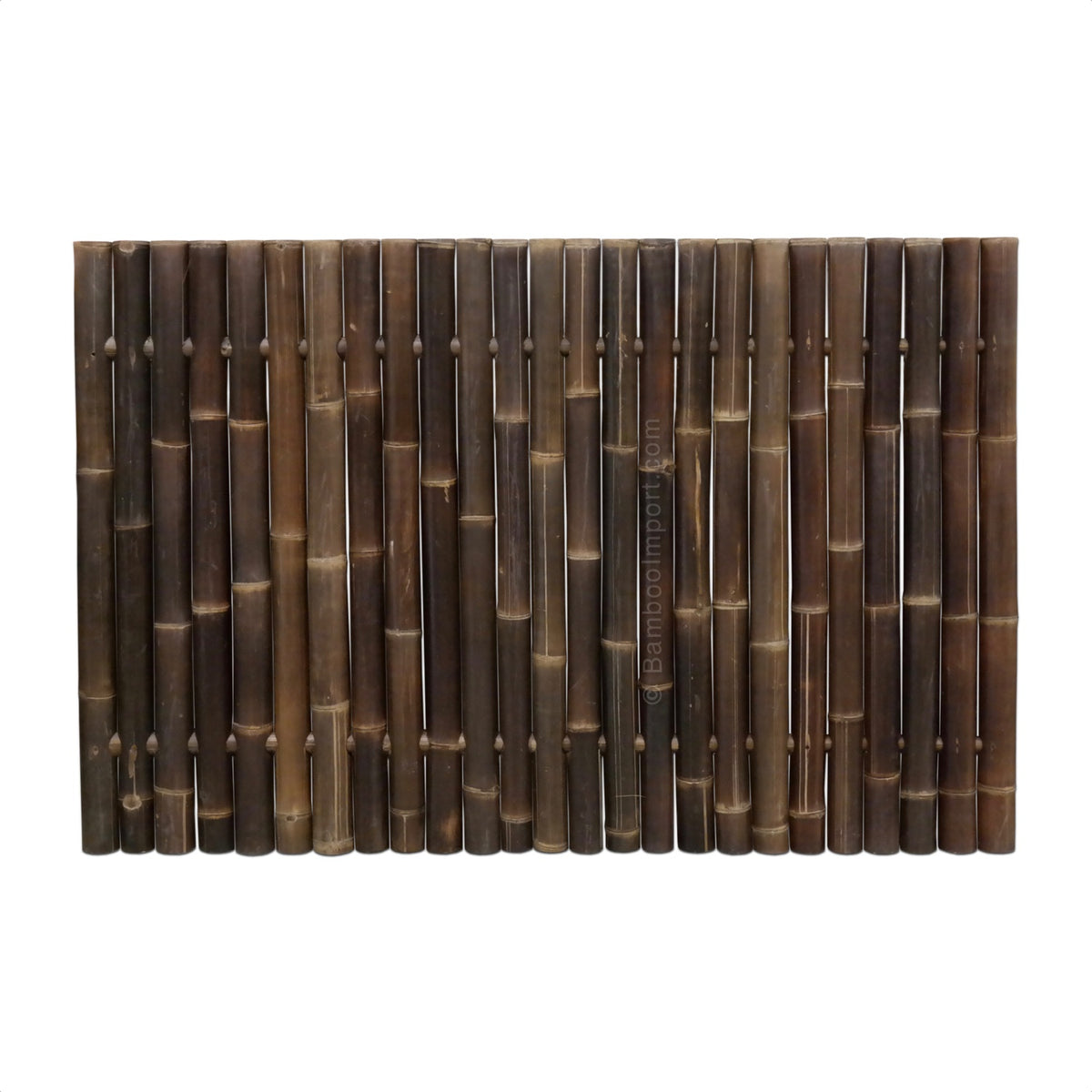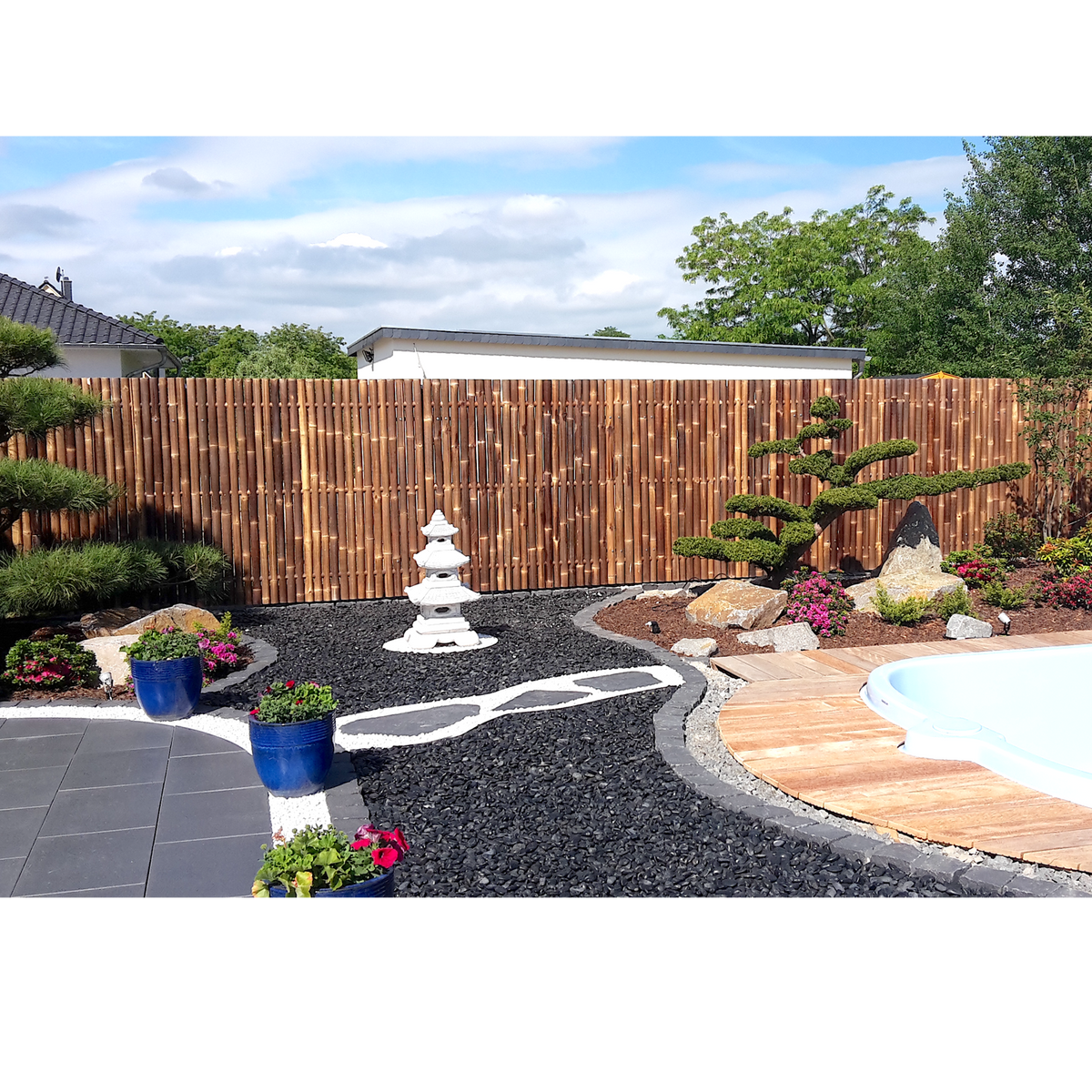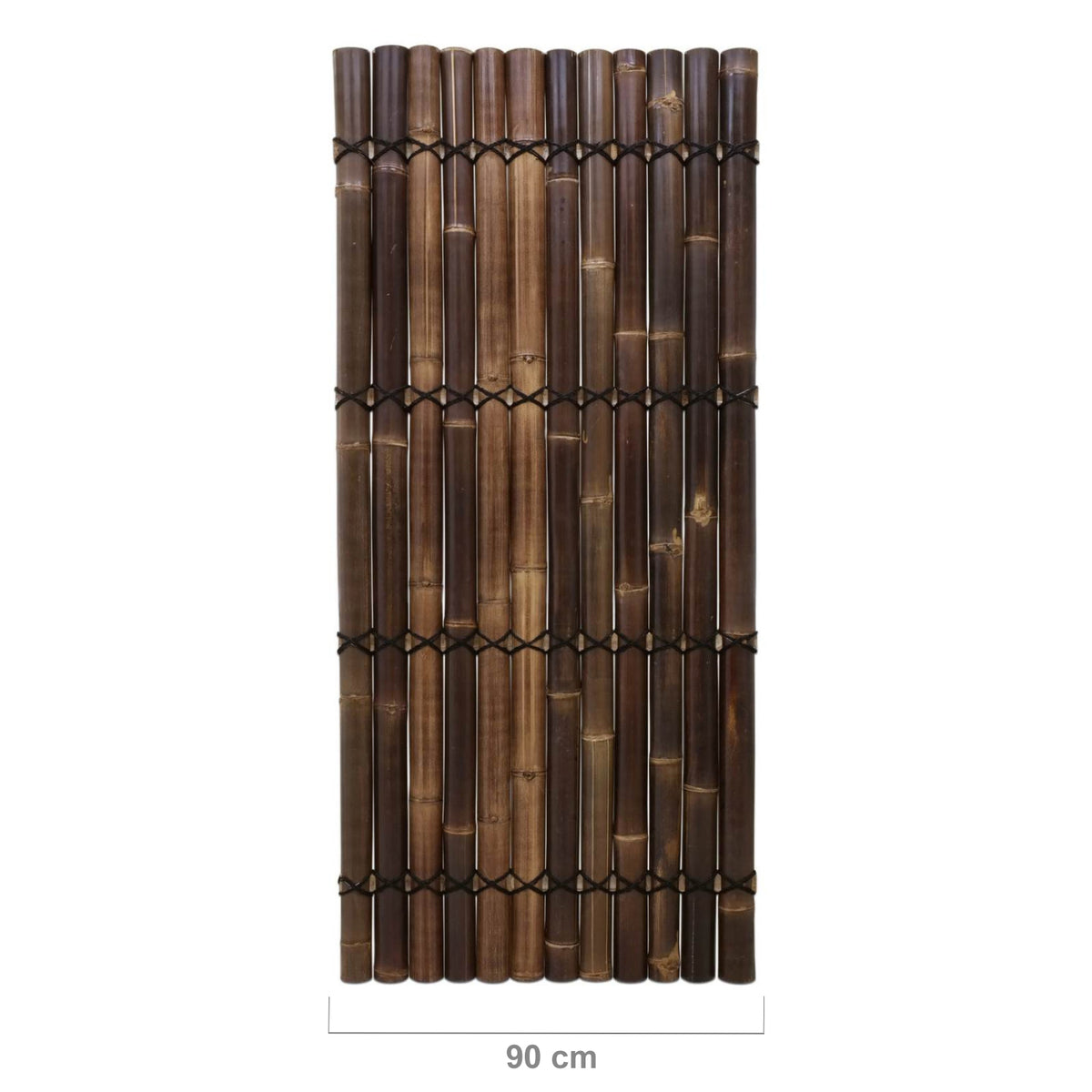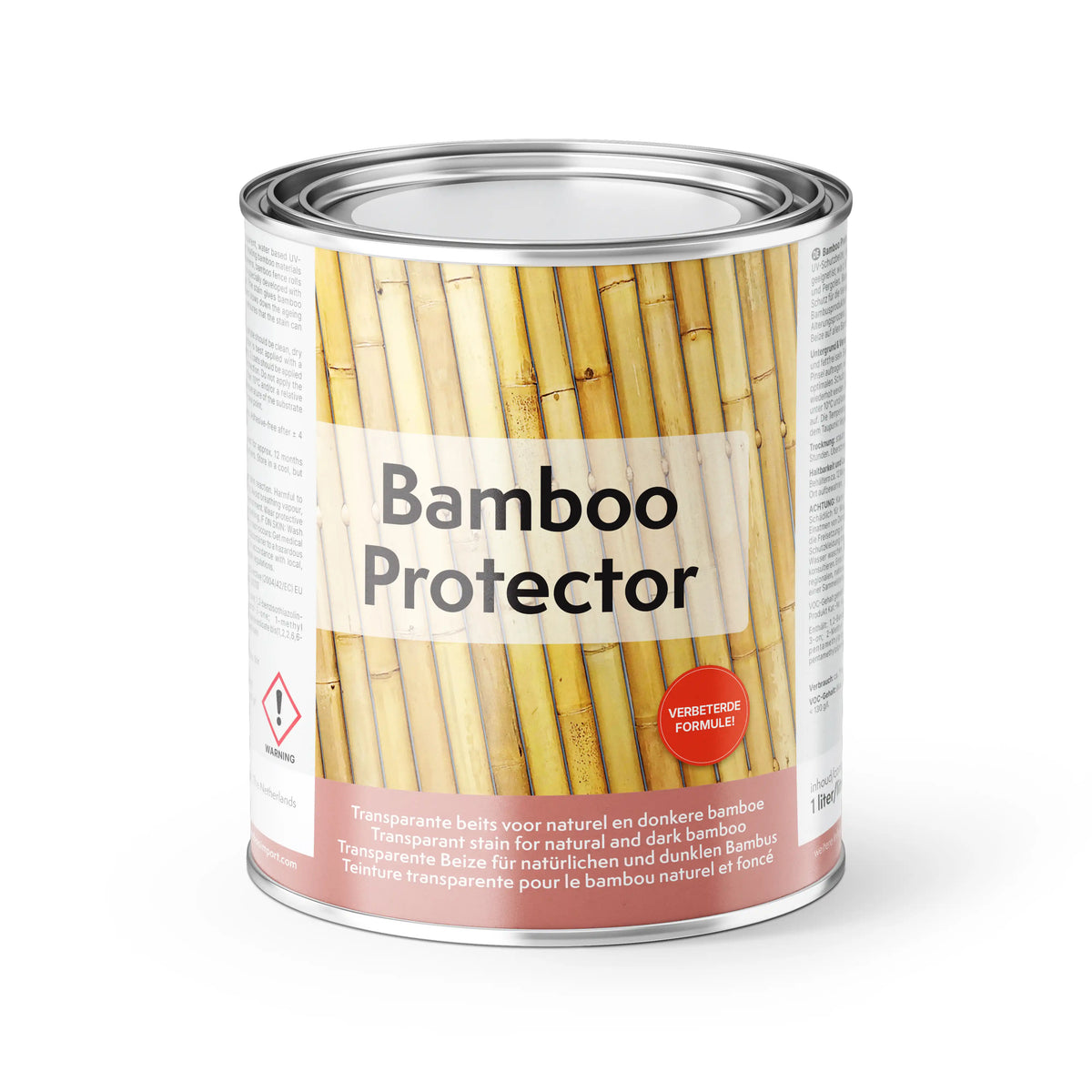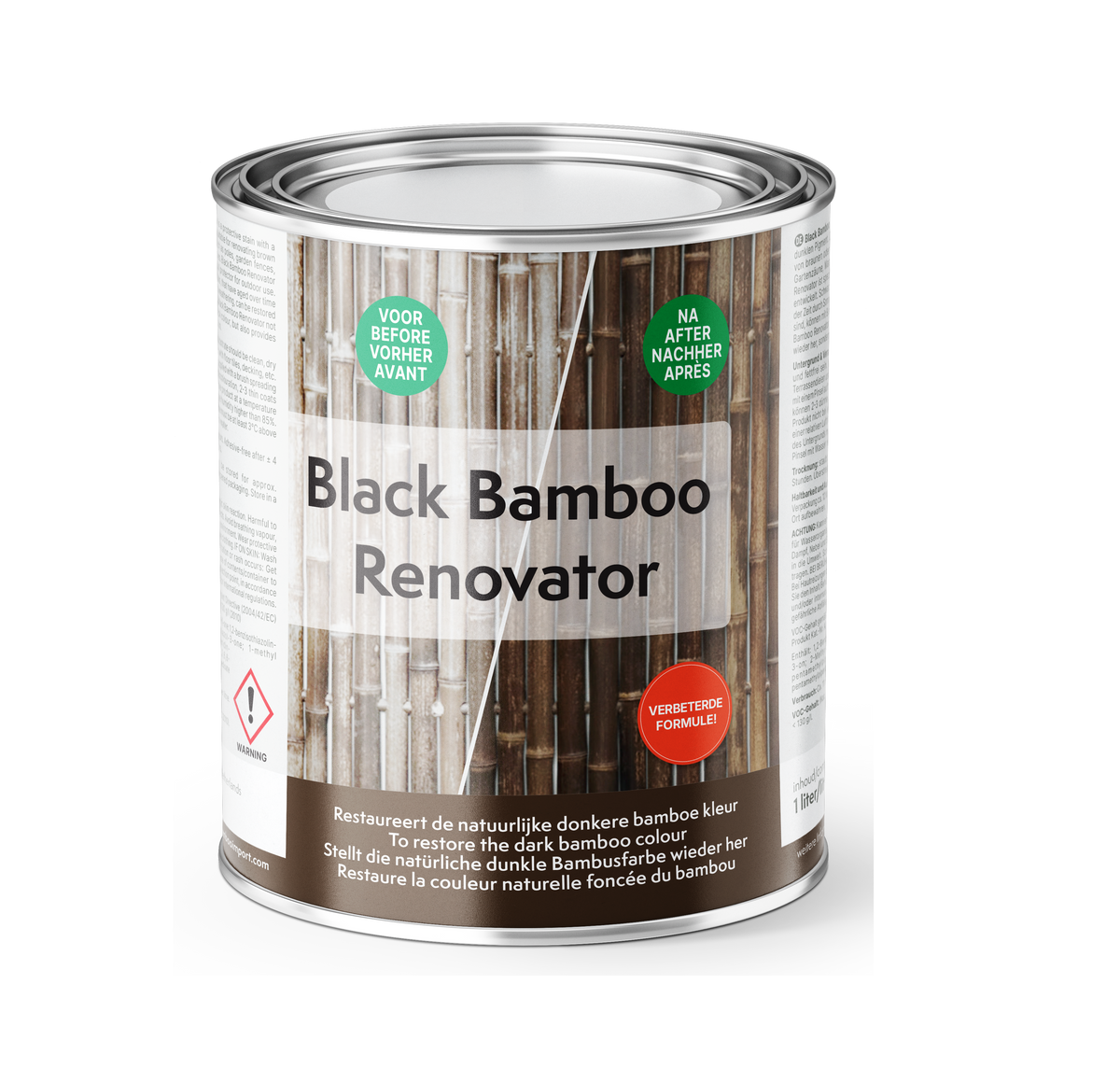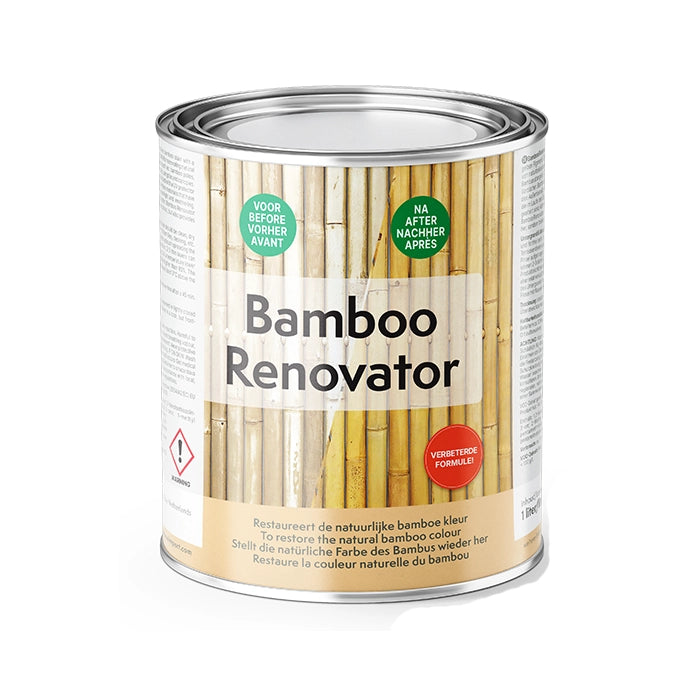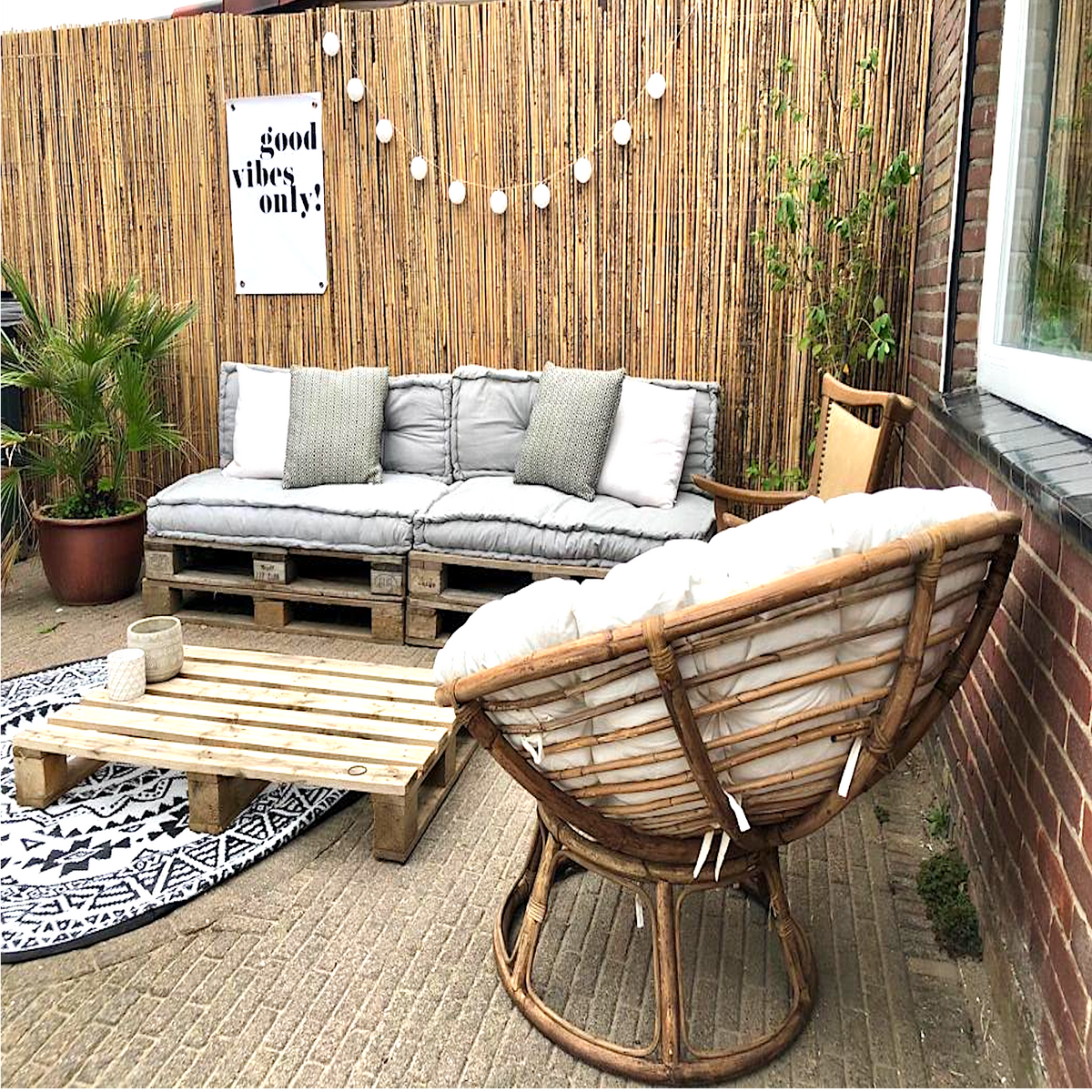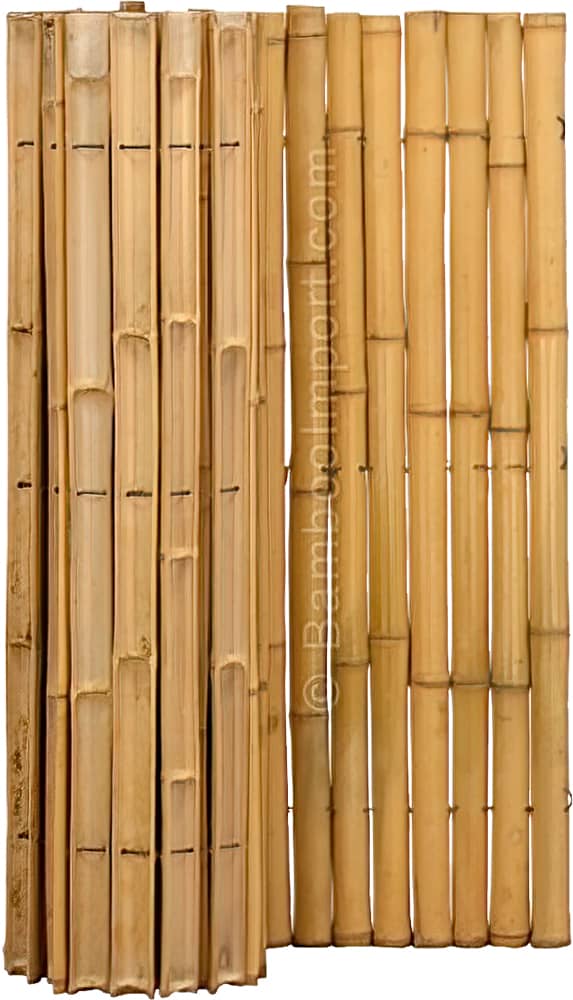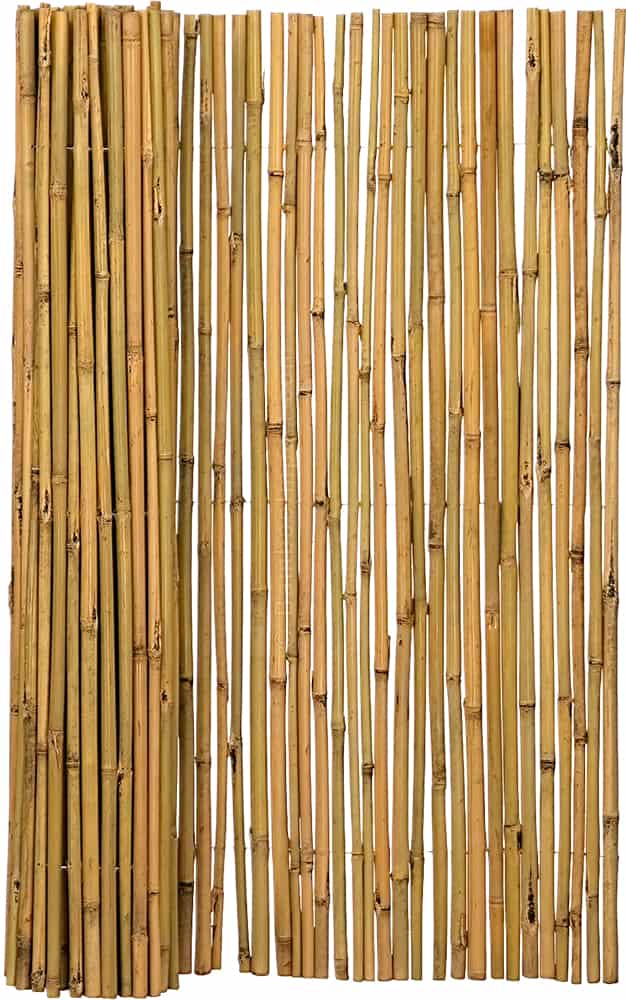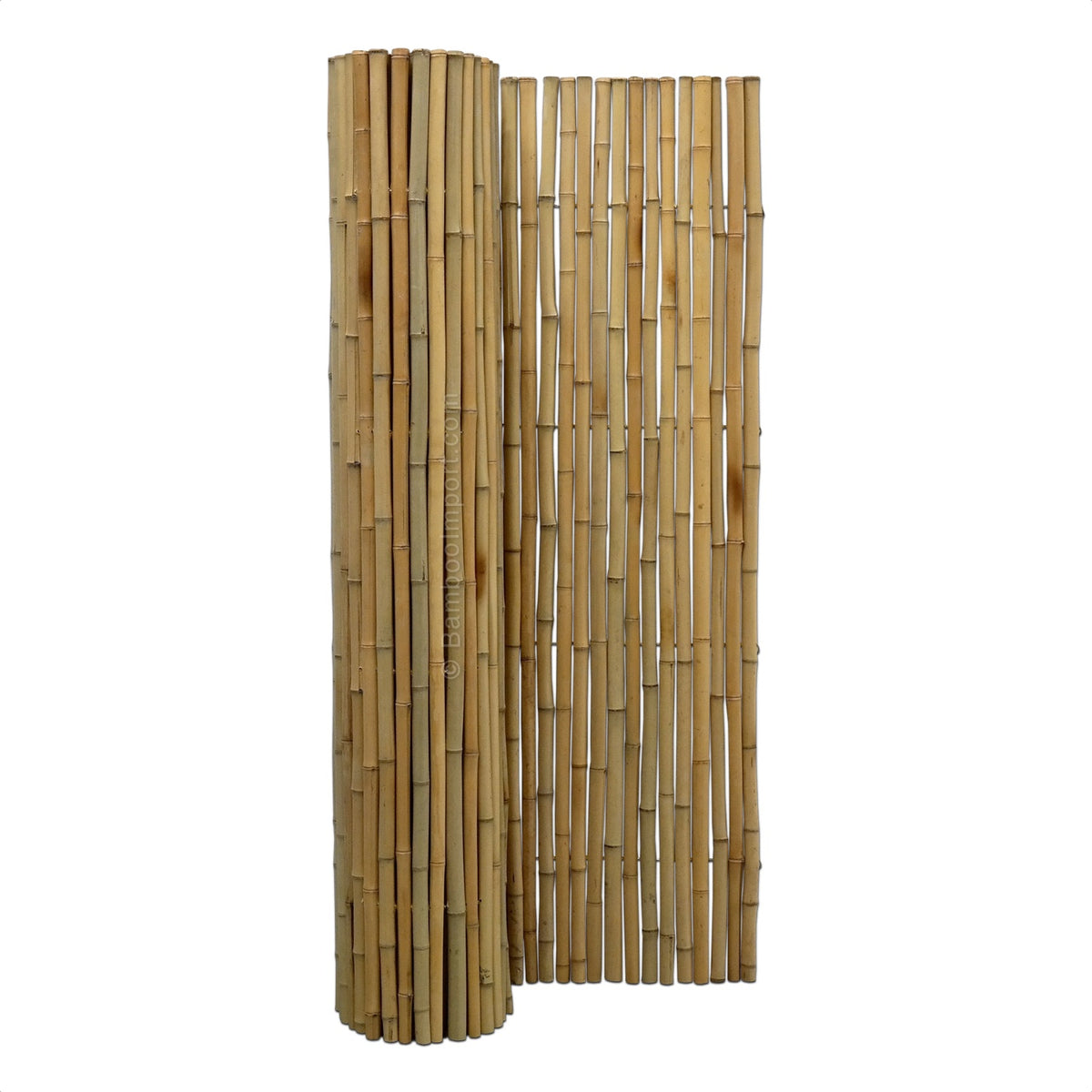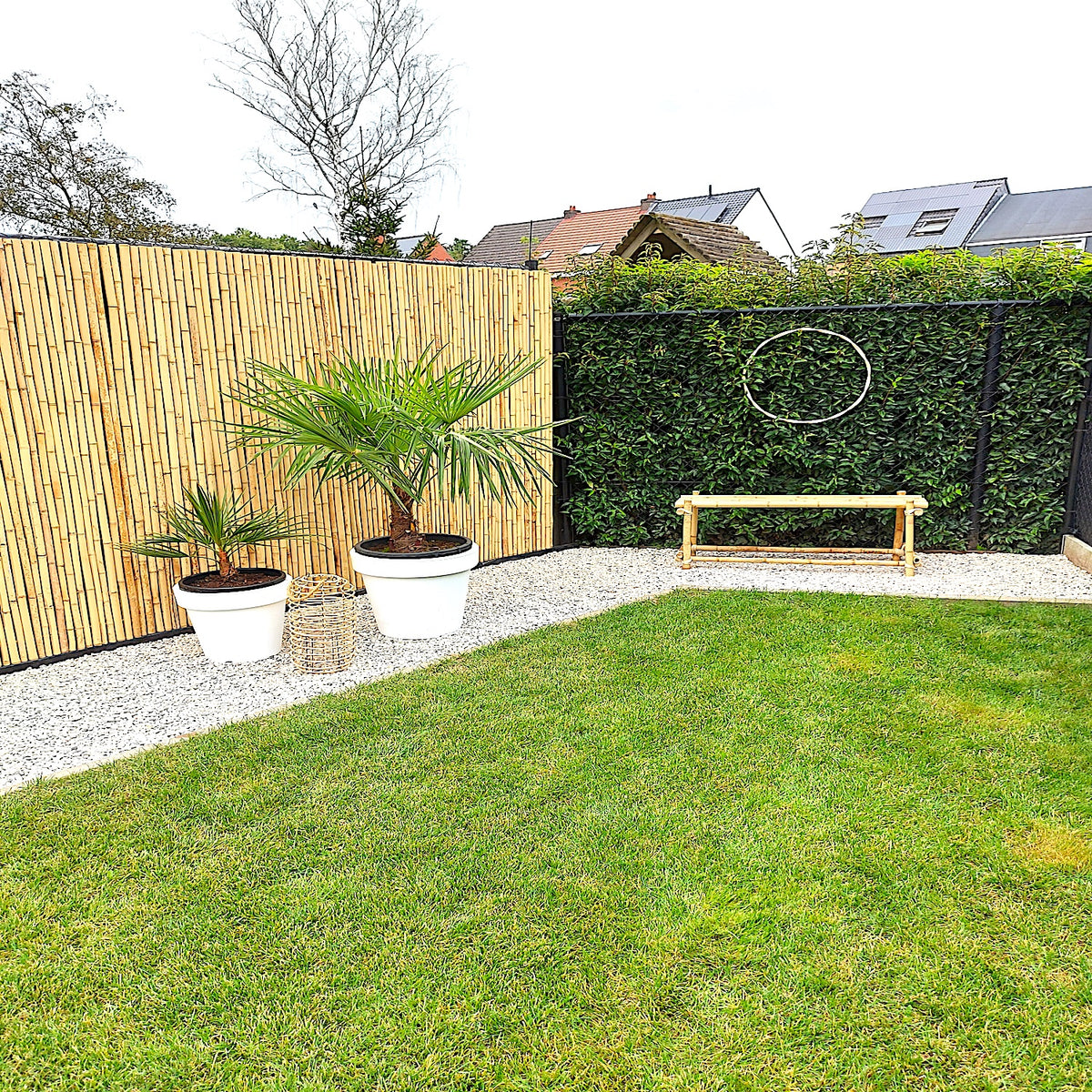Bamboo sticks can be used to build houses, furniture, bridges, rafts, towers, fences and thousands of other things. The challenge, however, is how best to knot and join bamboo. In this blog, we'll explain how.
Of course, traditional knots such as pole throwing, figure-eight lashing, fork lashing, diagonal lashing, and cross lashing are applicable to bamboo canes, but there are also special techniques using pegs, some of which we'll be happy to show you.
To clarify, you will notice that we often refer to internodes and knots in this article. An internode is the (hollow) part of the bamboo cane between two nodes. Nodes can be identified by the annular thickening of the bamboo cane and are solid.
Corded lashing
-
One of the simplest bamboo lashings is the drilled lashing. You cut the upright bamboo pole above the knot and drill a hole through the pole just below the knot. Then you can lash another bamboo pole to the post with a rope. Again, to prevent the sill from slipping, note the natural rings/thicknesses of the bamboo pole. Attach the crosswise bamboo pole so that the thickening is just above the upright pole.
-
Use a piece of iron thread or a makeshift hook to pass the lashing rope through the drilled hole. This technique is especially useful towards the end when there is already rope running through the bamboo and the hole has become smaller.
-
Above you can see the finished connection, where the ring of the sill is exactly in the middle. This connection was made with a pole throw. An additional flat knot was added below the hole to prevent the bamboo from tearing.
-
The drilled lashing technique can also be used to connect the end of a crossbar to an upright bamboo pole. Here, the rope is lashed directly over the bamboo knot/thickening. The downward force strengthens the connection as the bamboo pole thickens at this point. Considering the natural knots of a bamboo cane is an important rationale for strong bamboo construction.








-
The same technique can be used for bamboo joints that consist of more than one crossbar.
-
for corner joints with a raised bamboo tube.
-
for a combination of cross joints with a corner joint.
- In this last example, you can see a drilled bamboo connection of 4 crossbars with an upright bamboo tube. Once the connection is made, you can add additional twine and lash it down for more strength.
Lashing with stake
-
A variation of drilled lashing is lashing with stake, where the twine is not passed through a hole, but tied around the stake. The strength of this tie depends on the strength of the stake. Therefore, use a solid bamboo peg or one made of hardwood or metal.
-
First place a pole throw under the pen.
- Then knot the bamboo poles together and wrap the rope horizontally around the joint one or more times to pull the rope together properly. Finish with a flat knot.
-
Optionally, you can also make this connection by turning the upright bamboo stick a quarter turn so that the tenon is crossed in relation to the crossbar.




Lashing with angled tenon
-
Drill a hole through the bamboo knot at the angled tenon joint. Start just above the knot and end just below the knot on the other side. The angle can be adjusted slightly if needed.
-
Now insert a long peg through the angled hole. This peg will serve as a support for the bamboo crossbar.
-
Start with a pole throw under the peg, then tie the crossbeam to the angled peg.
- In this example, the connection is made with a long rope. Separate knots between the two bamboo poles and around each point through which the peg passes could also be made and would probably give a nicer result.




Peg and hole connection
-
For a peg and hole connection, drill a hole in the upright bamboo pole that is exactly the same diameter as the pole you want to insert. Make sure the bamboo stick is thinner than the upright stick. Use a speed drill or hole saw to drill the hole.
-
The thinner bamboo stick can then be pushed into the hole until it touches the back of the upright stick.
-
Now drill a hole through both bamboo sticks from the side so you can insert a dowel to secure the joint. This type of bamboo joint is very commonly used in building houses, furniture or ladders. If you want to build a bamboo ladder, you will need to drill the hole in the upright bamboo pole directly above a peg to strengthen the joint. If desired, the tenon can then be sawed off.
- To prevent cracks when heavily loaded, the joint can be terminated with twine.




Keyhole joint
-
In a keyhole joint, a thinner piece of bamboo (the "key") is inserted into a thicker bamboo stick and then secured with a pin.
-
The hole in the upright bamboo stick should be just large enough to insert a thinner piece of bamboo. The swelling of the knot at the end of this piece of bamboo will ensure that the "key" stays in place.
-
Again, note that the thicker stick ends with a knot for strength. You will also need to pierce the inside of this knot first so that the thinner piece will fit inside.






-
Then slide the slightly thicker bamboo stick over the key until it rests against the upright bamboo stick.
-
Drill a small hole through the thicker bamboo stick and the key so the whole thing can be secured with a pin.
-
For a nice end result, you can cut off the peg and finish the connection with twine if you like.
Knotted truss support
- In the knotted truss support, a piece of bamboo is lashed to an upright bamboo pole.
- The sill is then placed on the bamboo piece and knotted.
-
The knotted truss support can also be combined with a drilled lashing. Here, play with the length of the supporting bamboo piece so that it can rest on the nearest knot of the upright bamboo pole.



Diagonal corner supports
-
Diagonal corner supports can be added to almost any bamboo joint for extra stability. Try to attach the support just before or above the knot for maximum strength. If desired, the joints can be finished with twine.
-
Two diagonal corner supports can also be used, but note that multiple holes can weaken the upright bamboo pole if they are drilled at the same height. Therefore, set one support slightly higher than the other.
-
If the support does not end above a node, be sure to tie the joint. Place a mast throw just below and above the prop to prevent tearing.
-
Diagonal props can be used for all right-angled connections, secured with pins or cord.




How to extend bamboo poles?
Bamboo poles of different diameters can be joined together by sliding a thinner pole into a thicker one. The end of the thicker pole should then be tied to prevent cracking. This type of joint is often used for long fishing poles or flagpoles.

There are several techniques for lengthening bamboo canes, for example, the thinner cane can be secured with a pin, or grooves can be cut in the thicker bamboo cane to better secure the thinner cane.
Two bamboo canes of the same diameter can be joined with a slightly thinner inner bamboo rod. This thinner rod can either be left visible or hidden by pushing the two thicker rods together.

- To make a clamp connection, cut two notches in the knot of the thickest bamboo stick. This will give you four equal and flexible sections.
- Make the notches wide enough so that you have enough room to move the thinner bamboo stick.

- Push the thinner stick into the thicker stick until you reach the knot.
- Check that the bamboo sticks fit together well. If the thick stick is too wide open or the thin stick has too much space, choose another bamboo stick that fits better.
- Start tightening at the knot and wrap the rope over a long loop.
- After a few turns, pull the end of the loop to tighten the rope.
- Let the rope continue to wrap around the loop until the end is reached, and put the end of the rope through the loop.
- Pull on the beginning of the rope to pull the loop tight against the lashed section.
- Continue pulling and the loop disappears under the lashed section.





